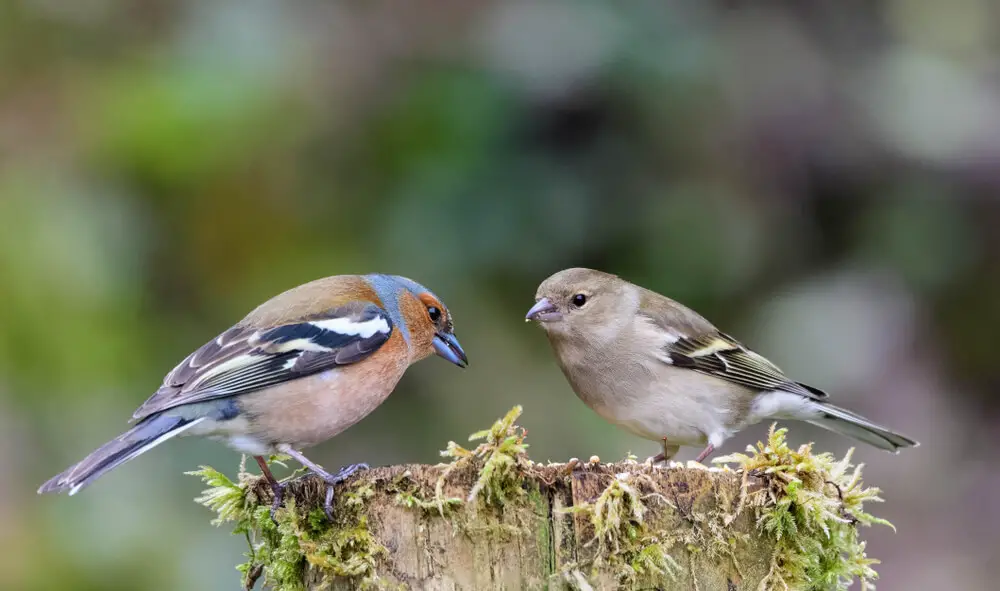I have recently returned from a break in a lovely cottage on farmland in North Yorkshire. The early morning sounds and the view from the bedroom window were spectacular, none more so than the tall hedgerow about 12-feet away from the window. Many bird species were darting in and out of the hedge, but the most active of all seemed to be the chaffinches. They made multiple trips, seemingly to collect small twigs to build their nest.
I haven’t seen this much activity in my garden, which made me ponder; where do chaffinches nest?
Chaffinches notoriously built their nests in deciduous woodland where the trees offered lots of cover and privacy. However, over recent decades, the birds have adapted – probably due to so many of us putting tasty treats on our feeding tables – and happily live in parks, gardens, and anywhere with hedgerows.
There are more chaffinches in the south, east, and central parts of England. There are also many to be seen in the uplands of northern England and Scotland.
No matter where they are, the most common place to find their nests is in the fork of branches, close to the trunk of a tree, shrub, or hedge.
Table of Contents
How chaffinches build their nest
The female does the lion’s share of the building work, as with many songbird species.
The male will already have selected and defended territory from as early as February; building the nest begins in April.
The female collects uniform twigs and creates a complex cup; it is sturdy enough to lift and move elsewhere if required.
She sometimes wraps spiders’ webs around the twigs to offer increased stability.

She fills it with moss and grasses for comfort before lining it with wool, feathers, and fine grass roots to keep the occupants insulated.
The final ‘decoration’ consists of a covering of lichen and bark flakes on the nest’s exterior; this provides camouflage and security from nosey predators.
The female chaffinch engineering skills are second to none. The placement of the twigs is amazing; each one oriented to offer maximum strength to the nest.
The building phase takes around a week to complete; she makes around 1,300 return journeys to collect building supplies.
Do chaffinches nest in gardens?
Chaffinches love to nest in gardens where there are hedges, bushes, and trees. They are clever birds that understand how much time and energy they conserve if there is a regularly stocked feeding table close by.
Adult chaffinches make up to 9-trips per hour foraging for food for the chicks. The young mainly eat caterpillars, but the parents stock up on treats to give them the energy they need to make the constant runs.
They prefer discreet locations; chaffinches won’t build too close to the house if there is a busy walkway. They prefer instead to settle in shrubs at the outer edges of the garden.
Some years you might see many more chaffinches than others, the years when the beech crop is poor. Chaffinches rely on beech mast for food during autumn; if none, they head to gardens to supplement their diet.
Do chaffinches use nesting boxes?
Bird boxes are popular among cavity-nesting birds such as tits, wrens, and robins.
Chaffinches, or any other member of the finch family for that matter, won’t use a bird box, preferring to build their own nest in the fork of a tree.
Final thoughts
Chaffinches build their nests anywhere there are shrubs, hedges, and trees. They are in the Top 10 most common birds in Britain, so keep a lookout; they are quite possibly nesting near you.
Failing that, keep your ears open; the chaffinch has the loudest and most varied of all calls. Follow the sounds to lead you to the beautiful birds.

Hi Walter
I stumbled upon your website this morning trying to find out more about wild garden bird nests, shapes, egg colour, etc. Thank you for your lovely website. Got so much information from it.
I have a nature and garden club for toddlers and this is part of my lesson this week. I am new to the UK and not so familiar with the birds and wild life yet. But I am learning fast.